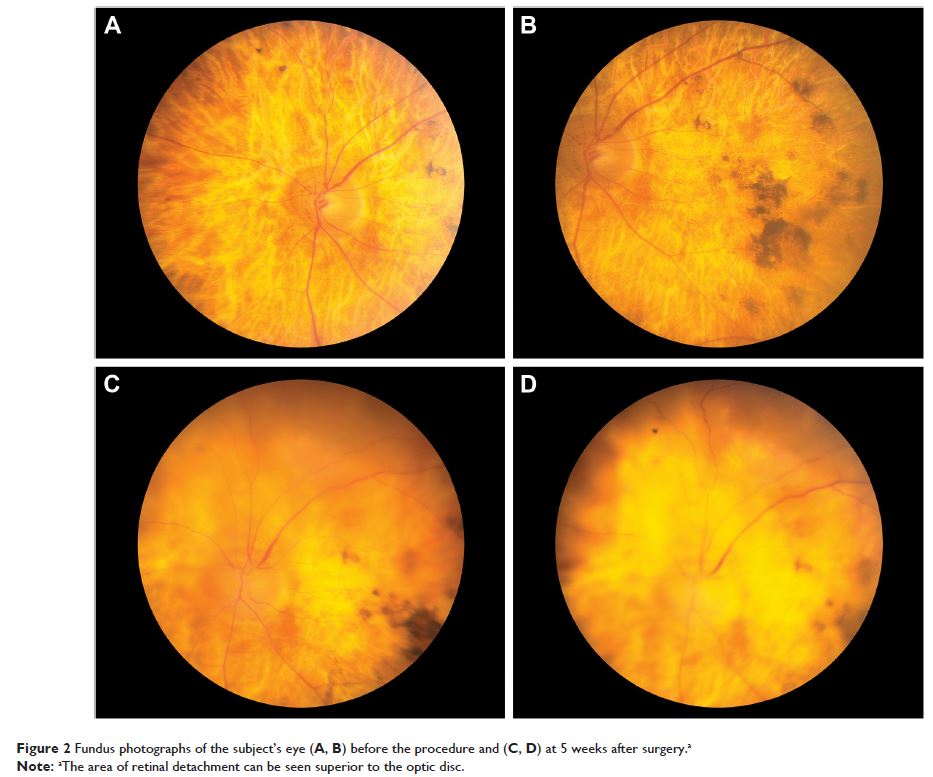9 7 8 1 6
论文已发表
注册即可获取德孚的最新动态
IF 收录期刊
- 3.3 Breast Cancer (Dove Med Press)
- 3.4 Clin Epidemiol
- 2.5 Cancer Manag Res
- 2.9 Infect Drug Resist
- 3.5 Clin Interv Aging
- 4.7 Drug Des Dev Ther
- 2.7 Int J Chronic Obstr
- 6.6 Int J Nanomed
- 2.5 Int J Women's Health
- 2.5 Neuropsych Dis Treat
- 2.7 OncoTargets Ther
- 2.0 Patient Prefer Adher
- 2.3 Ther Clin Risk Manag
- 2.5 J Pain Res
- 2.8 Diabet Metab Synd Ob
- 2.8 Psychol Res Behav Ma
- 3.0 Nat Sci Sleep
- 1.8 Pharmgenomics Pers Med
- 2.7 Risk Manag Healthc Policy
- 4.2 J Inflamm Res
- 2.1 Int J Gen Med
- 4.2 J Hepatocell Carcinoma
- 3.7 J Asthma Allergy
- 1.9 Clin Cosmet Investig Dermatol
- 2.7 J Multidiscip Healthc

Epiretinal membrane in a subject after transvitreal delivery of palucorcel (CNTO 2476)
Authors Spencer R, Fisher S, Lewis GP, Malone T
Received 22 April 2017
Accepted for publication 8 August 2017
Published 6 October 2017 Volume 2017:11 Pages 1797—1803
DOI https://doi.org/10.2147/OPTH.S140218
Checked for plagiarism Yes
Review by Single-blind
Peer reviewers approved by Dr Colin Mak
Peer reviewer comments 2
Editor who approved publication: Dr Scott Fraser
Background: A 70-year-old woman with retinitis pigmentosa experienced an
epiretinal membrane (ERM) formation and a tractional retinal detachment (RD)
following subretinal administration of palucorcel (CNTO 2476), a novel human
umbilical tissue-derived cell-based therapy, as part of a Phase I study. The
clinical course and results of a histologic examination of the ERM, which was
peeled during surgery to repair the RD, are described here.
Methods: In this open-label, first-in-human, Phase I study (NCT00458575),
two of seven subjects developed RD, with an ERM formation reported in a woman
receiving a targeted dose of 3.0×105 palucorcel administered via a transvitreal route. A sample of the ERM
was retained for analysis following the ERM peeling procedure. Clinical
outcomes and ERM histology, based on immunocytochemistry analyses and
fluorescence in situ hybridization (FISH) staining, were evaluated.
Results: We first noted the RD and formation of the ERM at 26 days after
palucorcel administration. The ERM was cellular and contained multiple cell
types, including Müller glial cells, immune cells, neurites, retinal pigment
epithelial cells, and palucorcel. The majority of cells were not actively
dividing. FISH staining showed a subset of Y chromosome-positive cells in the
ERM from this woman, supporting the presence of palucorcel (derived from
umbilical cord tissue of male neonate). Palucorcel did not differentiate into
Müller glia, immune cells, neurites, or retinal pigment epithelial cells.
Discussion: The development of an ERM containing both subject (self) cells and
palucorcel suggests that palucorcel egress in the vitreal cavity after
retinotomy may contribute to ERM formation and RD and that an alternative
delivery method will be required before further studies are conducted.
Subsequent clinical research using alternative subretinal delivery methods for
palucorcel in other indications suggests that membrane development does not
occur when palucorcel is delivered without retinal perforation.
Keywords: cell therapy, epiretinal membrane, retinitis pigmentosa
